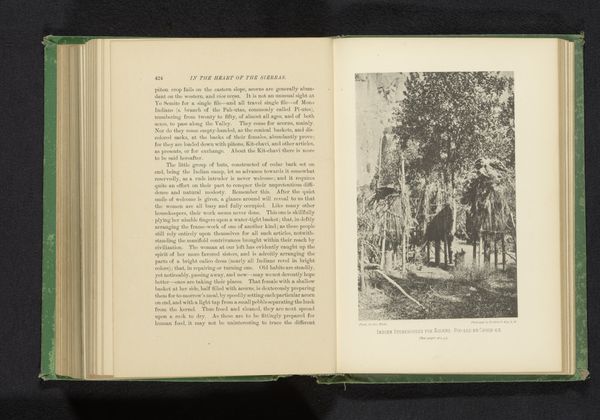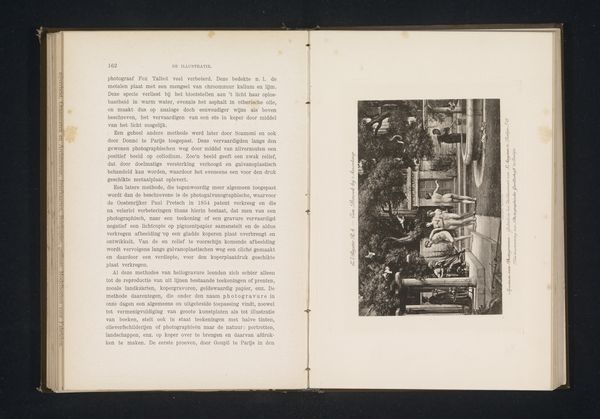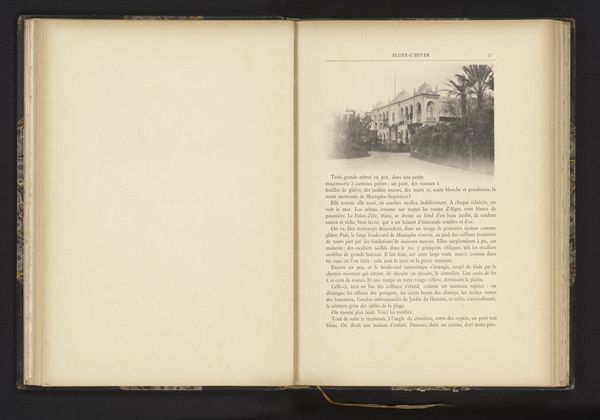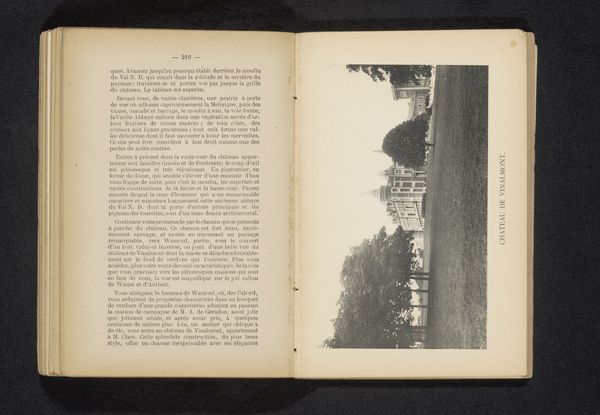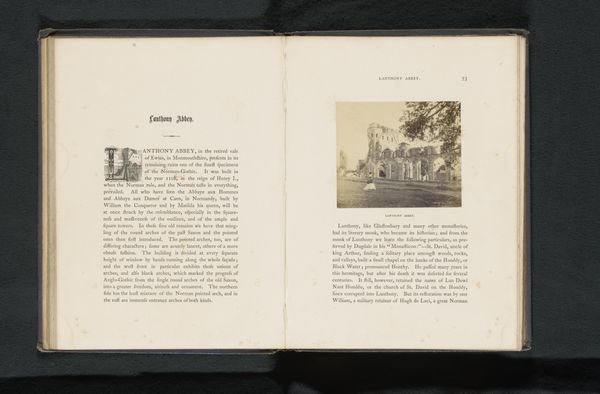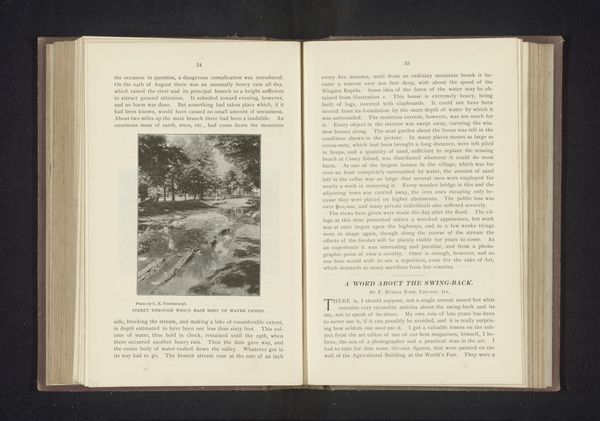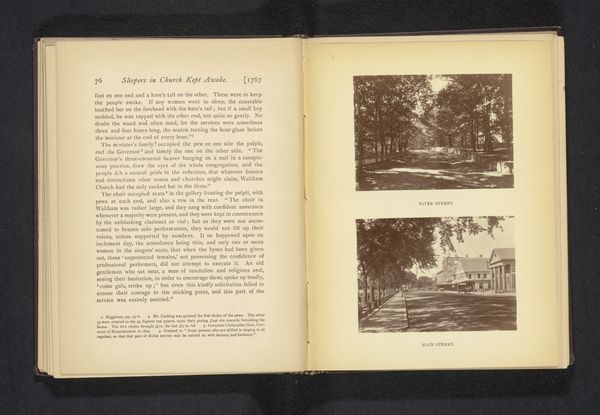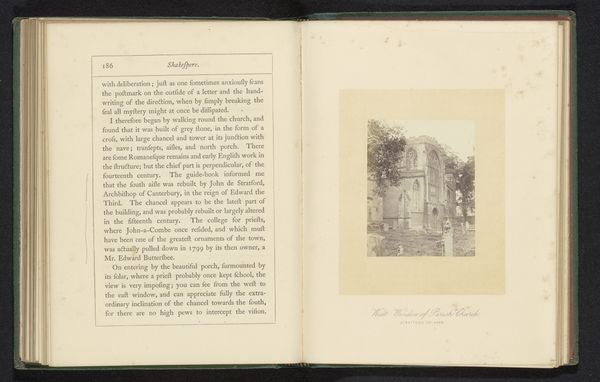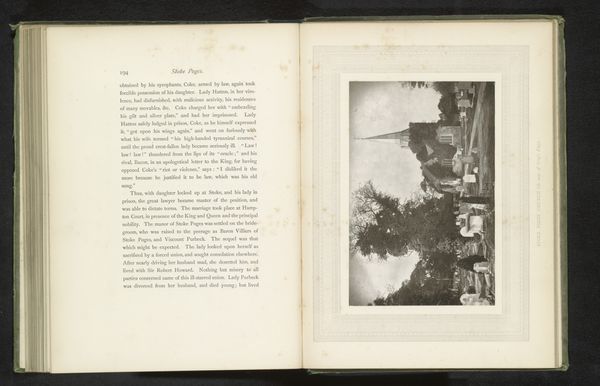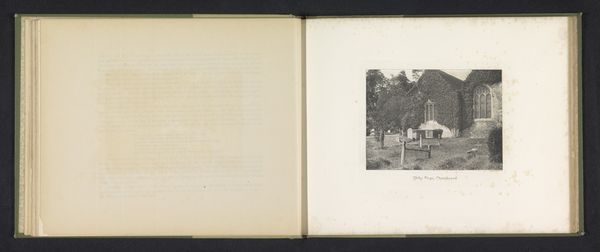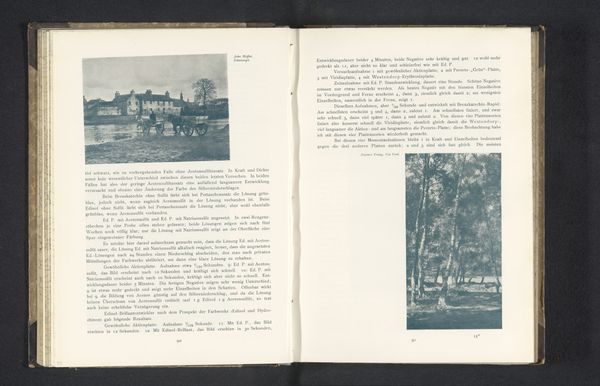
print, photography
# print
#
landscape
#
photography
#
street
Dimensions: height 90 mm, width 148 mm
Copyright: Rijks Museum: Open Domain
Editor: This photogravure, titled "Gezicht op een straat in Boufarik, Algerije", attributed to Jules Gervais-Courtellemont, and created before 1893, depicts a street scene. The way the light filters through the trees really grabs me, creating this almost staged and controlled presentation. What can you tell me about how context might shape our understanding of this image? Curator: The cultural context is really important here. This image captures a scene in French colonial Algeria. Notice how the ordered streetscape, with its regimented rows of trees, reflects a desire to impose order and control on the landscape. Consider how photography itself was being used as a tool by the colonizers, creating visual representations of the colonized world that often reinforced power dynamics. Editor: So, you're saying this isn't just a neutral snapshot. How can we see that visual representation embedded here? Curator: Look at the scale of the print in this bound book. The presentation mediates its "authenticity". Its function as both a document and a consumable aesthetic item affects how it reaches a potential audience. I think we are meant to see French planning as orderly and positive, an improvement perhaps, implying a hierarchy. Editor: I hadn’t considered it that way. It feels like I’m uncovering different layers the more we look. Curator: Right? Understanding the social and political backdrop reveals the inherent biases and perspectives that shaped both its creation and how it might have been received. I guess you could say the function of photography can shift from objective representation to subtle propaganda. Editor: This makes me realize the importance of questioning what's shown – and what isn't. Thank you! Curator: Exactly. I am just thrilled to have shared this way of perceiving this artwork.
Comments
No comments
Be the first to comment and join the conversation on the ultimate creative platform.

